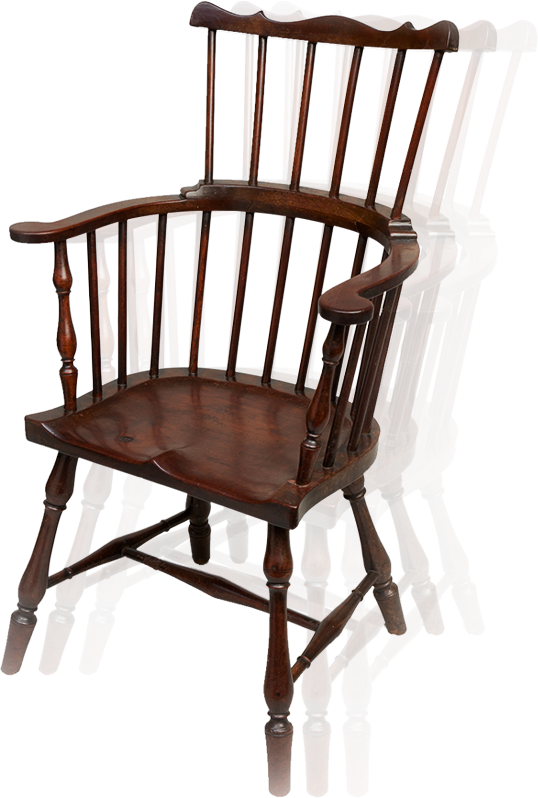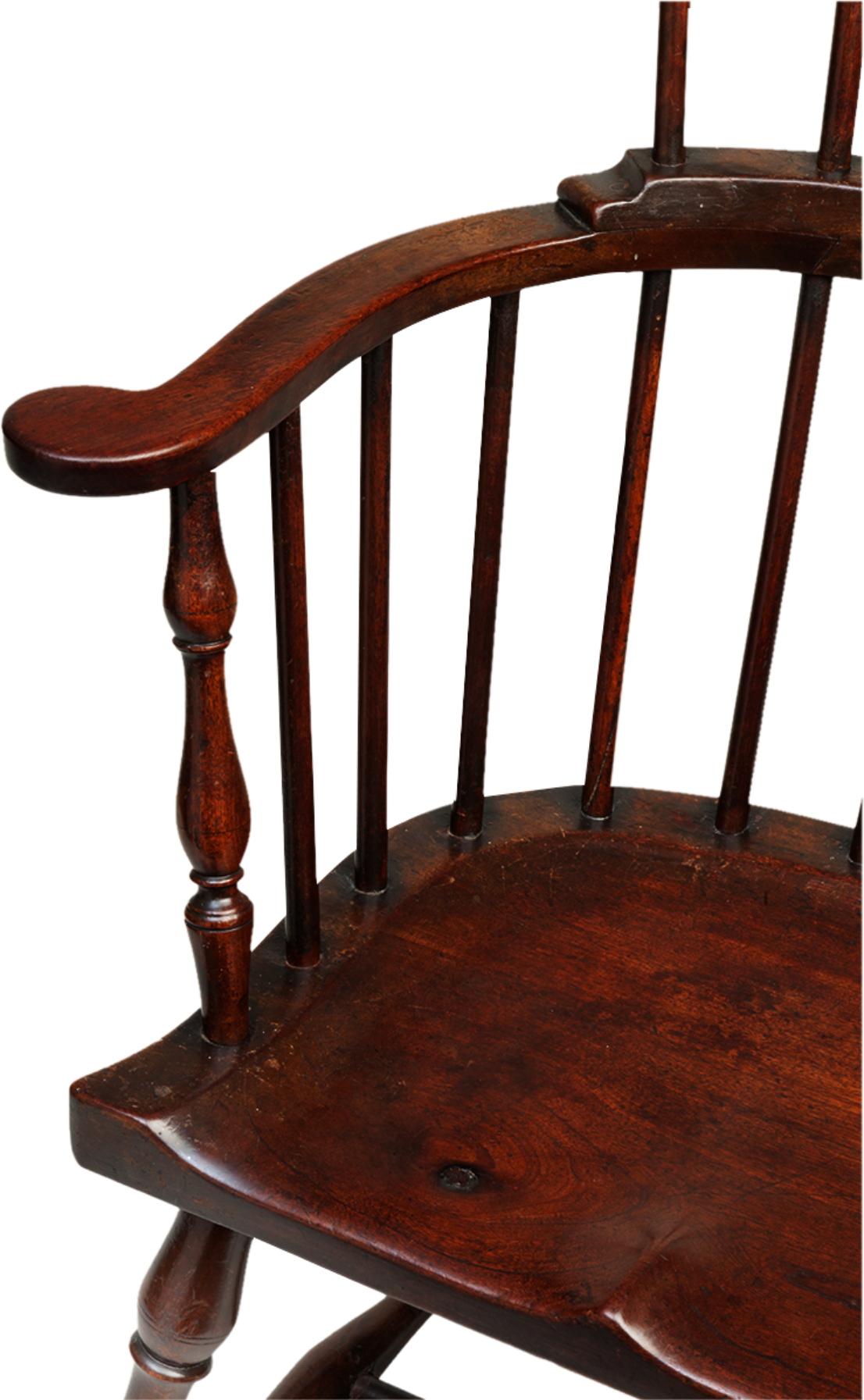









The demand for mahogany during the 1700s increased as urban furniture producers frequently used the timber as a primary hardwood on tables, case furniture, and chairs. Caribbean mahogany was thought to be especially fine both in terms of hardness and finished appearance, and although it was often shipped abroad, it was also prized by British and Europeans who colonized the Caribbean. Because they had ready access to mahogany through enslaved labor, British colonizers in Jamaica used mahogany to make a variety of furniture forms, including Windsor chairs like this example in The Chipstone Foundation collection. Although this form was typically made from a combination of soft and hard woods and then painted, a small number of mahogany Windsor chairs were produced in Great Britain, North American, and in the Caribbean.
Over time, many different names have been used to identify this type of chair. One that first rose to popularity in England beginning in the 1700s was “Forest Chair.” The term comes from the early production in England of chairs made from wood gathered in the forests around Windsor, and to this day “Windsor chair” remains the most common name. Because mahogany trees that grew in the forests of Jamaica were used to create this example, the designation as a “Forest Chair” is particularly appropriate and speaks not only to the site from which the wood came but also to the forced harvesting of mahogany by Africans and their descendants in the tropical rainforests of the Caribbean.
This particular Windsor chair was unmistakably inspired by imported Philadelphia examples, which were being shipped not only to the Caribbean Islands by the middle of the 1700s but also throughout the American colonies. Owning an imported Windsor or a locally made mahogany example almost certainly would have indicated one’s wealth and taste due to their relative rarity. Like the mahogany tea table, comfortable and stylish chairs of this sort were solely sat in by the owners and their guests, never by the enslaved household servants whose only contact would have been to move and clean the chairs. Many of the artifacts that American and Caribbean plantation owners came to rely on for selfish pleasures and pretentious display derived directly from the manual labor of enslaved workers.


LISTEN
PAUSE


